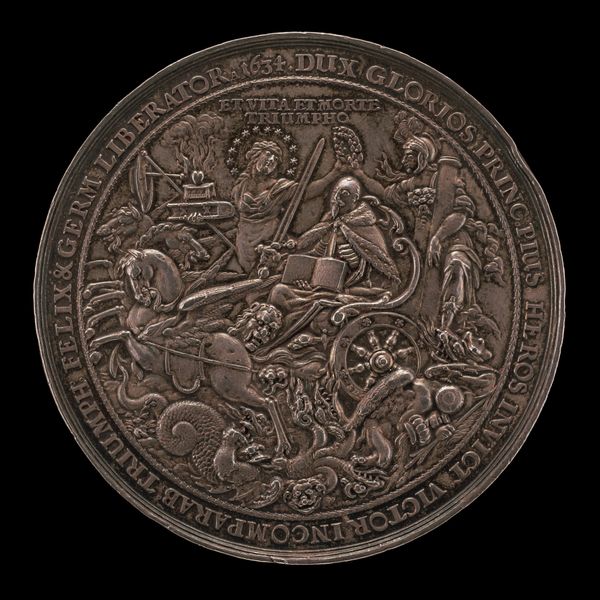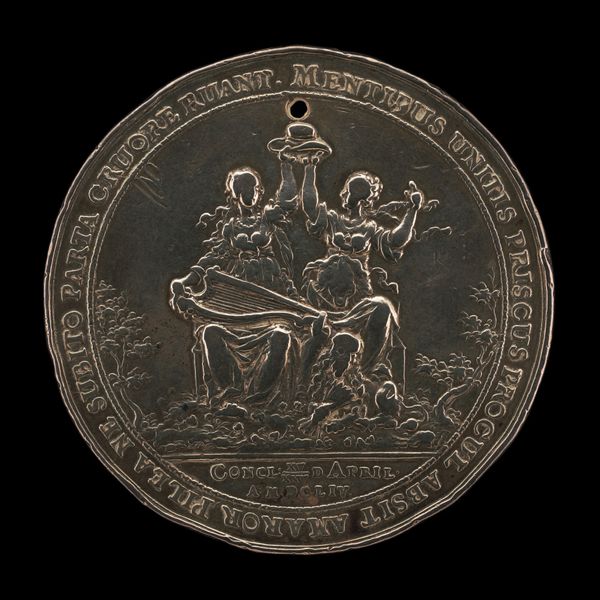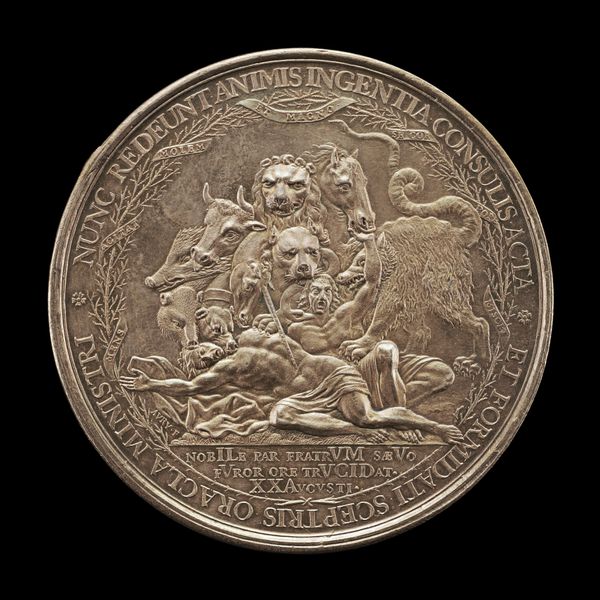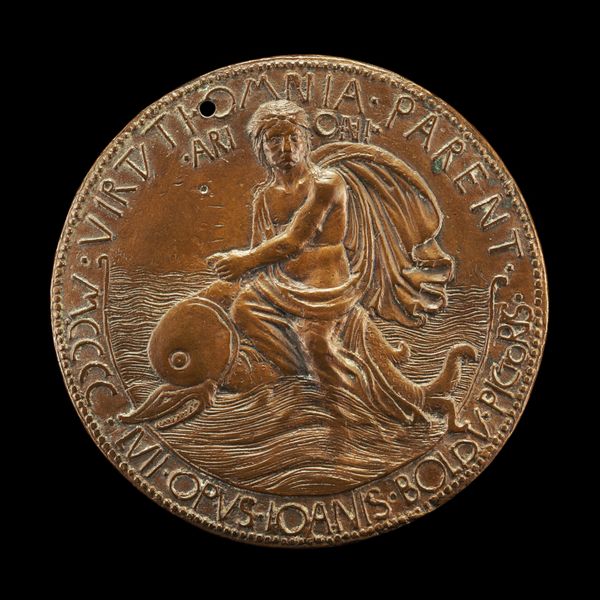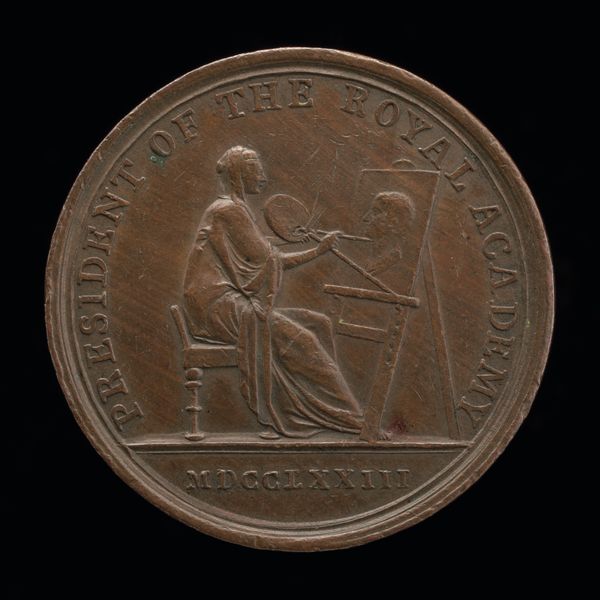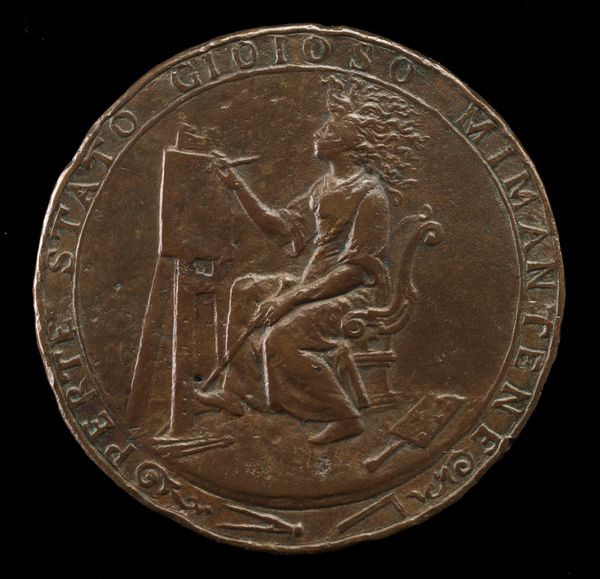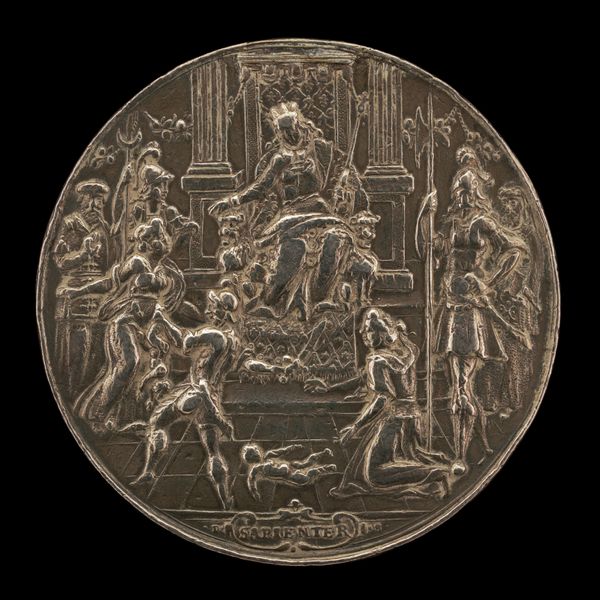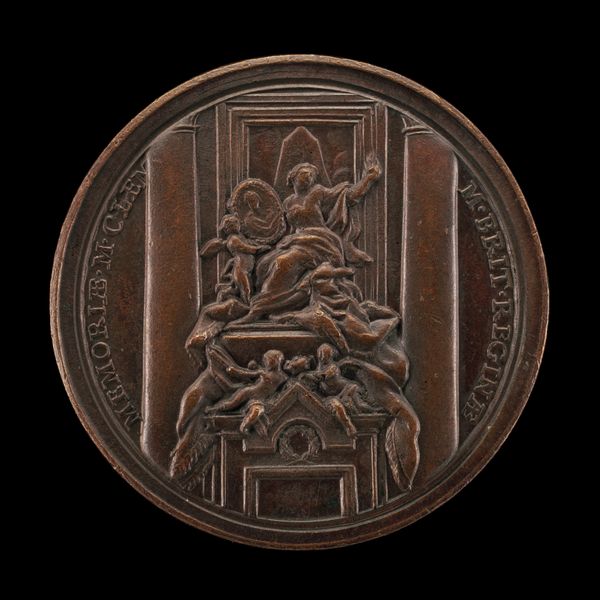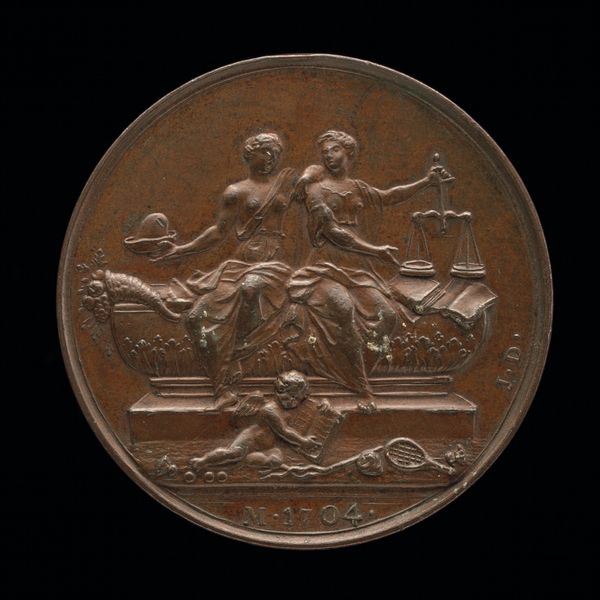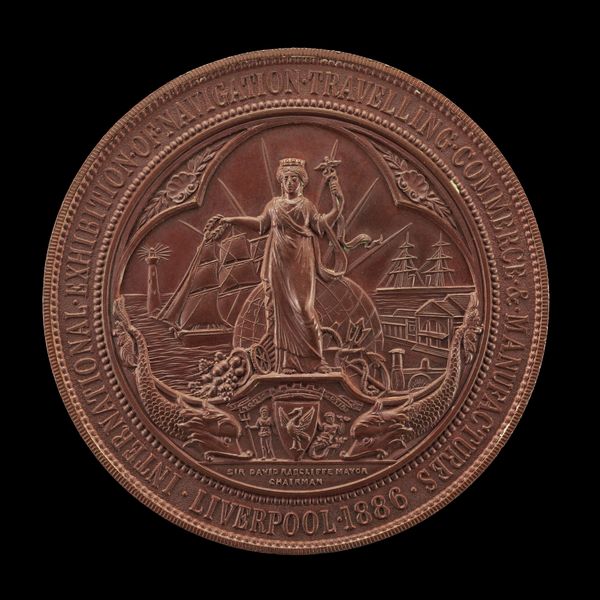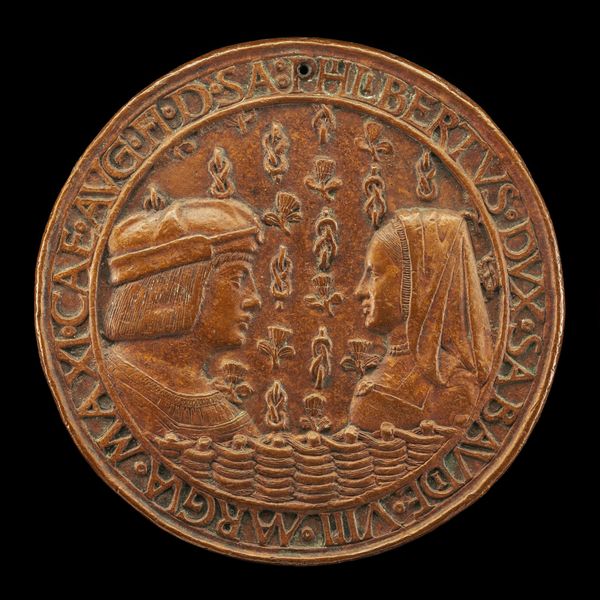![Death of Gustavus II Adolphus, 1594-1632, King of Sweden 1611 [obverse] by Sebastian Dadler](/_next/image?url=https%3A%2F%2Fd2w8kbdekdi1gv.cloudfront.net%2FeyJidWNrZXQiOiAiYXJ0ZXJhLWltYWdlcy1idWNrZXQiLCAia2V5IjogImFydHdvcmtzLzA0MjdjMmM0LWFkNDctNGE1Ny1hNjNlLTExNDIwNzg3NmE3NC8wNDI3YzJjNC1hZDQ3LTRhNTctYTYzZS0xMTQyMDc4NzZhNzRfZnVsbC5qcGciLCAiZWRpdHMiOiB7InJlc2l6ZSI6IHsid2lkdGgiOiAxOTIwLCAiaGVpZ2h0IjogMTkyMCwgImZpdCI6ICJpbnNpZGUifX19&w=3840&q=75)
Death of Gustavus II Adolphus, 1594-1632, King of Sweden 1611 [obverse] 1634
0:00
0:00
metal, relief, sculpture
#
portrait
#
baroque
#
metal
#
sculpture
#
relief
#
mosaic
#
sculptural image
#
sculpture
#
history-painting
Dimensions: overall (diameter): 7.91 cm (3 1/8 in.) gross weight: 150.28 gr (0.331 lb.) axis: 12:00
Copyright: National Gallery of Art: CC0 1.0
Curator: Look at this powerful imagery. This is the obverse of a medal created in 1634 by Sebastian Dadler titled “Death of Gustavus II Adolphus, 1594-1632, King of Sweden 1611”. It's quite a layered representation of the king's death. Editor: My initial impression is its overwhelming feeling of finality and drama. It’s almost theatrical, like a scene frozen from a grand opera. It definitely wants the viewer to feel the weight of the moment. The material itself seems to be some kind of dark, perhaps tarnished, metal? What is it? Curator: Yes, there's definitely a Baroque sensibility at play! It’s crafted from metal. Notice how Dadler uses symbolic language to present not just death but ascension. The cherubs, the sunburst… they elevate Gustavus to a realm beyond earthly struggles. The Latin inscription "Euge Serve Fidelis" translates to "Well done, good and faithful servant," reinforcing that divine judgment. Editor: So interesting how metal transforms in its function – from coinage to propaganda. I see the artistic labor clearly—someone meticulously hammered, cast or chased this metal. The inscription wrapped around reminds me how potent written language could be on a mass produced medium, embedding ideology into something easily circulated and held in one's palm. How were these kinds of objects actually used at the time? Curator: These medals would have served multiple purposes: commemorating the king, certainly, but also disseminating a particular image of his reign and his death. The "history painting" element puts him on par with legendary rulers. It’s about shaping legacy. His soul ascends even as soldiers continue battling behind him in the lower portion of the piece. It suggests that the battle for legacy, the "history painting," is still happening. Editor: Absolutely. Thinking about material cost, distribution, and accessibility...this metal object signifies far more than a memorial piece, it’s a deliberate and quite public facing statement, reflecting the power dynamics of its time. One wonders about the labour of striking and how this shaped meaning, too? Curator: Indeed, it makes one contemplate not just the artistry but also the complex web of social, economic, and political factors intertwined with its creation. The symbolic power, magnified through materiality and distributed through production. Editor: Thanks! That close looking helps underscore what such charged, circulated material things can tell us about power.
Comments
No comments
Be the first to comment and join the conversation on the ultimate creative platform.
